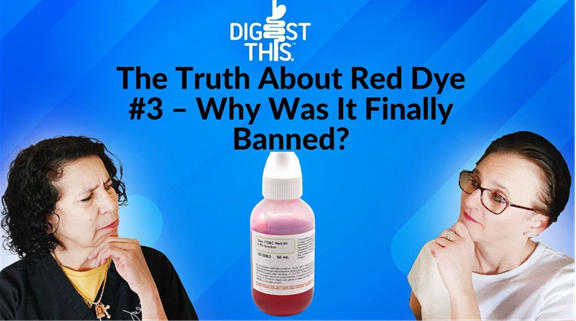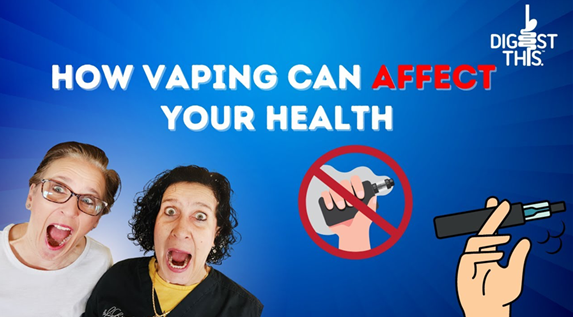The FDA has finally banned Red Dye #3 in foods—a decision that comes 30 years after Europe took the same action. While this represents progress in food safety, the ban won't take effect immediately, and there's still work to be done with other artificial dyes that pose similar health risks.
Red Dye #3, also known as Erythrosine, has been linked to cancer in laboratory animals and hyperactivity in children. The synthetic dye, derived from petroleum, has been coloring our foods for decades despite being banned in cosmetics since the 1990s. Here's what you need to know about this long-overdue decision and how it affects your family's health.
Why Red Dye #3 Got Banned

The FDA's decision stems from mounting evidence about Red Dye #3's health dangers. Studies showed the artificial colorant caused thyroid tumors in male laboratory rats, providing clear evidence of its cancer-causing potential. Additionally, research has consistently linked Red Dye #3 to hyperactivity and attention problems in children.
Europe recognized these dangers back in 1994, banning Red Dye #3 from all food products. The United States banned it from cosmetics and externally applied drugs in the 1990s because it wasn't considered safe for skin contact. Yet somehow, it remained approved for consumption in foods—a contradiction that highlights the inconsistencies in our food safety regulations.
The petroleum-based chemical acts as what scientists call a xenobiotic—a foreign substance that triggers inflammatory responses in the body. Chronic inflammation from repeated exposure to such chemicals can create conditions that potentially lead to cancer development over time.
The Two-Year Transition Period
Here's the concerning part: food manufacturers have two full years to remove Red Dye #3 from their products. This means Red Dye #3 will continue appearing in foods well into 2027, despite the FDA acknowledging its health risks.
Companies argue they need time to reformulate products and find alternatives. However, this transition period means families concerned about artificial dyes must continue reading labels carefully for the next two years.
Foods That Contain Red Dye #3
Red Dye #3 appears in numerous processed foods, particularly those marketed to children. Common products include:
● Cakes and cupcakes
● Frosting and icing
● Popsicles and frozen treats
● Strawberry-flavored milk
● Candy and confections
● Cough syrups and medications
● Baked goods with pink or red coloring
The easiest way to identify Red Dye #3 is by reading ingredient labels. Food manufacturers must list "Red Dye #3" or "Erythrosine" in the ingredients, making it relatively simple to avoid once you know what to look for.
What About Red Dye #40?
Red Dye #40 remains legal and widely used in American foods, despite sharing many of the same health concerns as Red Dye #3. This artificial colorant also causes hyperactivity in children and represents the most commonly used food dye in the United States.
Popular products containing Red Dye #40 include:
● Takis and flavored chips
● Doritos
● M&Ms
● Skittles
● Many breakfast cereals
● Sports drinks
While Red Dye #40 hasn't been directly linked to cancer in the same studies as Red Dye #3, it still triggers inflammatory responses and behavioral issues in sensitive children. Many parents choose to avoid all artificial dyes, not just the banned ones.
Natural Alternatives Exist
Food companies have access to natural coloring alternatives that don't pose health risks. Beets provide beautiful red coloring, while other fruits and vegetables can create virtually any color needed for food products.
The reason companies choose synthetic dyes over natural alternatives often comes down to cost. Petroleum-based dyes are cheaper to produce and provide more vibrant, consistent colors than natural options. However, as consumer awareness grows and regulations tighten, more companies are making the switch to natural colorants.
How to Protect Your Family
The most effective way to avoid harmful food dyes is becoming a diligent label reader. Look beyond the nutrition facts panel to examine the actual ingredients list. Any artificial dyes will be clearly listed, making them easy to identify and avoid.
Consider these protective strategies:
Read every label: Even products that seem natural or healthy may contain artificial dyes. Check ingredients on everything from yogurt to bread.
Choose whole foods: Fresh fruits, vegetables, and unprocessed foods naturally avoid artificial additives.
Look for natural alternatives: Many companies now offer versions of popular products made with natural colorings.
Be extra careful with children's products: Items marketed to kids often contain the highest concentrations of artificial dyes.
The Bigger Picture on Food Safety
The Red Dye #3 ban represents a step forward, but it also highlights how slowly our food safety system responds to health concerns. Europe banned this dye three decades ago, yet American families have continued consuming it in countless products.
This situation underscores the importance of personal vigilance when it comes to food choices. While we wait for regulations to catch up with science, families must take responsibility for reading labels and making informed decisions about what they consume.
The inflammatory effects of artificial dyes extend beyond immediate behavioral issues. Chronic inflammation contributes to numerous health problems, including increased cancer risk, digestive issues, and immune system dysfunction.
Take Action Now
Don't wait two years for companies to reformulate their products. Start reading ingredient labels today and eliminate Red Dye #3 from your family's diet immediately. While you're at it, consider avoiding Red Dye #40 and other artificial colorants that pose similar health risks.
Remember that vibrant, artificially colored foods may look appealing, but they often signal the presence of synthetic additives that don't belong in our bodies. Choose foods that get their colors from natural sources—your health is worth more than eye-catching packaging.
The FDA's ban on Red Dye #3 validates what health-conscious families have known for years: artificial food dyes pose unnecessary health risks. Use this as motivation to clean up your family's diet and prioritize foods that nourish rather than harm your body.
👉 Book a consultation with our team to get personalized support
👉 Or check out the other amazing Dr. Liz Cruz products designed to help you and your family eat cleaner and live better





